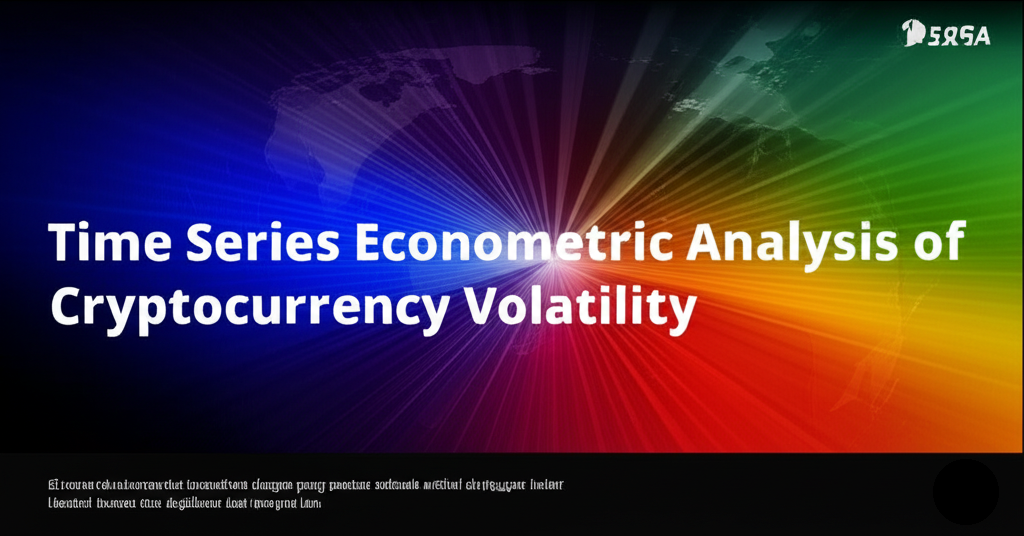
The cryptocurrency volatility econometrics field is becoming increasingly essential as the cryptocurrency market experiences extreme fluctuations. By applying time series econometrics, analysts and investors can better understand and predict the often volatile behavior of crypto assets, enabling smarter decision-making. This article explores key insights into how econometric techniques improve cryptocurrency volatility econometrics and help forecast market movements.
Contents
- 1 Understanding Cryptocurrency Market Volatility
- 2 Key Time Series Econometric Models
- 3 Role of External Factors in Volatility
- 4 High-Frequency Data Analysis
- 5 Volatility Spillovers Among Cryptocurrencies
- 6 Detecting Structural Breaks and Market Regimes
- 7 Implications for Long-Term Investment
- 8 Challenges and Future Directions
- 9 Integrating Cryptocurrency Volatility Econometrics into Risk Management
- 10 Conclusion
Understanding Cryptocurrency Market Volatility
Volatility in the cryptocurrency market is characterized by rapid and unpredictable price changes, driven by factors ranging from regulatory news to market sentiment and technological innovation. Unlike traditional financial markets, crypto operates 24/7, which adds complexity to analyzing its crypto volatility. Using financial time series data, time series econometrics models, such as GARCH (Generalized Autoregressive Conditional Heteroskedasticity), help capture volatility clustering and persistence common in crypto price data.
Key Time Series Econometric Models
Among the most effective models are the GARCH family and its variants like EGARCH and TGARCH, which account for asymmetry and leverage effects in volatility. Researchers also apply ARIMA (AutoRegressive Integrated Moving Average) and VAR (Vector Autoregression) models to analyze dynamic interactions between multiple cryptocurrencies and external economic variables. These models improve volatility forecasting, allowing investors to hedge risks and optimize portfolios.
Role of External Factors in Volatility
External shocks such as regulatory announcements, security breaches, and macroeconomic events heavily influence crypto price fluctuations. Time series econometrics can incorporate these events as dummy variables or exogenous regressors in models to quantify their impact. For example, a study on Bitcoin’s response to regulatory news utilized event-study methodologies combined with GARCH models to measure volatility spikes precisely.
High-Frequency Data Analysis
Given the continuous trading of cryptocurrencies, analysts have access to high-frequency data that captures minute-by-minute price changes. Applying intraday time series econometrics, such as realized volatility models, reveals finer volatility structures and enables near real-time risk management. This level of granularity is rarely available in traditional assets and provides a competitive edge for crypto traders.
Volatility Spillovers Among Cryptocurrencies
Volatility does not occur in isolation. Using multivariate time series models like DCC-GARCH, researchers examine how shocks in major cryptocurrencies, such as Bitcoin and Ethereum, affect altcoins. Understanding these spillover effects helps in diversification and managing systemic risk across the crypto portfolio.
Detecting Structural Breaks and Market Regimes
Cryptocurrency markets are prone to structural breaks caused by innovation or shifts in investor behavior. Econometric tests like the Bai-Perron multiple breakpoint test identify regime changes, ensuring that forecasting models remain valid over time. Adapting to these structural breaks improves forecasting accuracy and reliability.
Implications for Long-Term Investment
Beyond short-term trading, cryptocurrency volatility econometrics supports strategic investment decisions by quantifying expected risk-adjusted returns. Institutional investors increasingly rely on these models to construct resilient portfolios and assess long-term market trends.
Challenges and Future Directions
Despite advances, cryptocurrency volatility econometrics faces challenges including data quality, model selection, and rapidly evolving market conditions. Future research focuses on integrating machine learning with traditional econometric models to capture nonlinearities and enhance forecasting power. Additionally, expanding data sources to include social media sentiment and blockchain metrics promises richer volatility insights.
Integrating Cryptocurrency Volatility Econometrics into Risk Management
Effective risk management in cryptocurrency trading heavily depends on accurate volatility measurement and forecasting. Integrating cryptocurrency volatility econometrics into risk frameworks allows traders and institutions to dynamically adjust their exposure based on predicted market turbulence. Tools such as Value-at-Risk (VaR) and Expected Shortfall (ES) often utilize volatility forecasts derived from time series econometrics models to quantify potential losses. This integration not only mitigates risk but also enhances capital allocation and compliance with regulatory standards in an evolving crypto landscape.
Conclusion
Incorporating time series econometrics into cryptocurrency analysis enhances the understanding and forecasting of market volatility. By leveraging advanced models, incorporating external factors, analyzing high-frequency data, and accounting for market interdependencies, investors and policymakers can better navigate the highly volatile crypto landscape. Emphasizing cryptocurrency volatility econometrics will continue to be crucial as digital assets become more mainstream and integrated into global financial systems.
Further Resources
For foundational knowledge, explore Wikipedia’s Econometrics entry. Dive deeper into financial applications with our guide on Financial Time Series and explore Volatility Forecasting Techniques.
